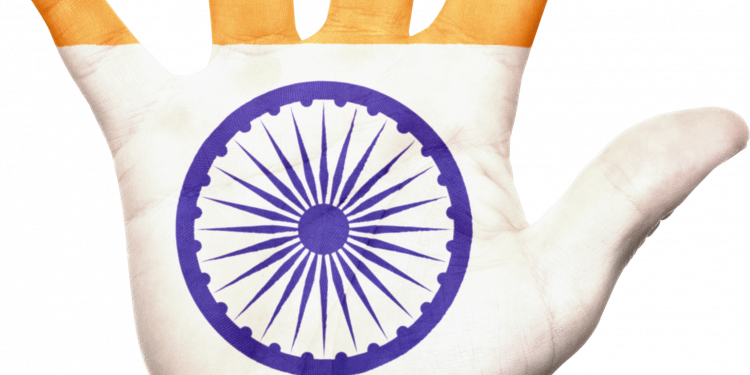Regaining India’s Position in Global Economy: India Ranks 7th in World Economy

Recently, India was ranked 7th in world economy 2017.The economy of the United States is the largest in the world. At $18 trillion, it represents a quarter share of the global economy (24.3%), according to the latest World Bank figures followed by China, Japan, Germany, UK and France.
This is a remarkable feat achieved by India.
Introduction
India is slowly rising from the ashes since independence. She is ‘rebuilding’ her economy and has already been established one of the fastest growing economies in the world. Is India ‘emerging’ or ‘reemerging’ as one of the most powerful economies?
Brief History
A study by Belgian economist Paul Bairoch compared economies of different nations from 1750 through 1980. He found out that in the 18th century China was on the top with 33% of world’s GDP and India ranked second with 24.5%, U.K and the U.S with 1.8% and 0.1% respectively. India and China accounted for 50-60% of GDP in first 1500 years.Then it plummeted to 20% in 1800. 8% in 1880 and 1.7% in 1990.
Impact of colonialism
The motivation of British imperialism was economic, which can be illustrated by an example of textile industry.India, which used to export fine cotton and silk to rest of Asia, Europe and Africa in 1750s; exported raw cotton, opium and indigo in 1850s. This wiped out the employment of thousands of weavers and drastically reduced their wages.
India’s GDP accounted for 24% (approx) in the 1700s, had 90% of her population living below poverty line and around 83% of the population being illiterate in 1947. In just a span of 150-200 years, India faced economic and social challenges.
Post-Independence
Till the 1980s, India did not grow at a fast pace despite investments in constructions (dams), irrigation facilities, infrastructures, modern technologies, educational institutions etc.. This is attributed to cold war politics, defence expenditure, population etc..
The economy started growing in the 1980s largely due to investment. The industry and the agriculture grew at an annual rate of 6.6% and 3.6% respectively. Liberalization happened in the 1990s and India’s economy boomed from US$ 267.52 billion in 1992 to US$ 1.85 trillion in 2012.
Growing Fast
I In his new book, The World Economy: Growth or Stagnation? Dale Jorgenson, the Samuel W. Morris University Professor at Harvard University, answers why India’s economy boomed. To determine which factors contributed most to growth Jorgenson and his coauthors’ growth, weighed each of the five KLEMS components: Capital (which uses the K), Labor, Energy, Materials, and Services Purchased. Jorgenson explained that the KLEMS data revealed a somewhat startling pattern. “Our findings contradict conventional wisdom that productivity leads to growth,” he said. Instead, “we determined that a sharp acceleration in investment made up the predominant source of growth in the world economy,” led by the emerging markets of China and India. Money made all the difference. In India during the early 1990s, as the IMF called for the country to reduce import tariffs and taxes, deregulate markets, and allow greater foreign investment. Both implementations of those reforms and subsequent investment flows came more gradually to India, helping explain why its growth lagged China’s.Now that India’s reforms have begun to catch up, Jorgenson credited the young population of India for recent gains. “India’s more favorable demography pushes up the hours worked and productivity components,” he said. “Those factors have led to India overtaking China” in the race to the world’s fastest-growing economy.
The Future
Studies by United States Department of Agriculture Economic Research Service( USDA) suggest that India will become 3rd largest economy in the world by 2030 surpassing Japan, UK, Germany and France. Moreover Pwc has analyzed long-term global growth projections to 2050 for 32 of the largest economies in the world, accounting for around 85% of world GDP. The following are the result of their analysis.
‘The world economy could more than double in size by 2050, far outstripping population growth, due to continued technology-driven productivity improvements
Emerging markets (E7) could grow around twice as fast as advanced economies (G7) on average
As a result, six of the seven largest economies in the world are projected to be emerging economies in 2050 led by China (1st), India (2nd) and Indonesia (4th)
The US could be down to third place in the global GDP rankings while the EU27’s share of world GDP could fall below 10% by 2050
UK could be down to 10th place by 2050, France out of the top 10 and Italy out of the top 20 as they are overtaken by faster growing emerging economies like Mexico, Turkey and Vietnam respectively.’
Conclusion
It is evident from the economic studies that India has the potential to remerge as one of the greatest economies. It is attributed to the working population of the country and the expected introduction of a nationwide goods and services tax in July, replacing multiple state taxes, should also spur growth by making India an easier place to do business.Indeed ‘achhe din aane waale hain’.




